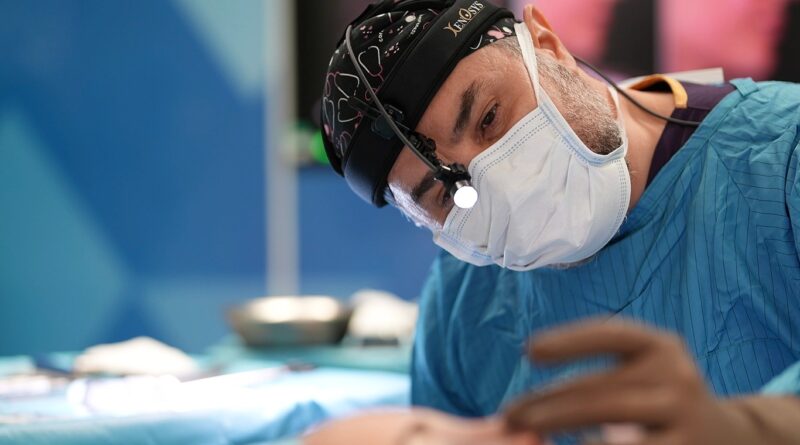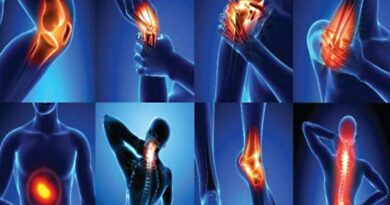Ultrasonic Rhinoplasty: A Revolutionary Approach to Nasal Surgery
Rhinoplasty, commonly known as a “nose job,” has long been a sought-after cosmetic and functional procedure for individuals desiring nasal enhancements or corrections. However, the traditional surgical techniques, while effective, often came with prolonged recovery times, significant swelling, and bruising. Enter ultrasonic rhinoplasty, an innovative approach that has transformed the landscape of nasal surgery. This advanced method offers unparalleled precision, reduced trauma, and quicker recovery times, making it an increasingly popular choice for patients worldwide.
What is Ultrasonic Rhinoplasty?
Ultrasonic rhinoplasty is a cutting-edge technique that uses ultrasonic tools to reshape the nasal bones and cartilage with remarkable accuracy. Unlike traditional rhinoplasty, which often relies on manual instruments such as chisels and rasps, ultrasonic rhinoplasty employs ultrasonic waves to delicately sculpt the nasal structure. This technique minimizes damage to surrounding tissues, resulting in less bruising and swelling and a more comfortable recovery process.
How Does Ultrasonic Rhinoplasty Work?
The procedure involves the use of a piezoelectric device, which generates ultrasonic vibrations to precisely cut or reshape the bone without affecting soft tissues like the skin or mucosa. This level of precision is especially beneficial when addressing intricate areas of the nose or achieving symmetrical results.
Key steps in ultrasonic rhinoplasty include:
- Consultation and Planning: A detailed assessment of the patient’s nasal structure and desired outcomes is conducted. Advanced imaging technology may be used to create a surgical plan.
- Surgery: Under general anesthesia, the surgeon makes small incisions and uses the ultrasonic device to refine the bone and cartilage as needed.
- Finishing Touches: The nose is reshaped, and incisions are closed with sutures. Splints may be applied to protect the nasal structure during healing.
Benefits of Ultrasonic Rhinoplasty
Ultrasonic rhinoplasty offers numerous advantages over traditional methods:
- Greater Precision: The ultrasonic device allows surgeons to work with exceptional accuracy, reducing the risk of asymmetry or overcorrection.
- Minimized Trauma: By targeting only the bone and cartilage, the procedure avoids unnecessary damage to soft tissues, leading to less bruising and swelling.
- Shorter Recovery Time: Patients typically experience a faster healing process and can return to their daily routines sooner.
- Enhanced Safety: The controlled nature of ultrasonic technology reduces the likelihood of complications during surgery.
- Improved Aesthetic Outcomes: The precision of ultrasonic tools enables more refined and natural-looking results.
Who is a Suitable Candidate for Ultrasonic Rhinoplasty?
Ultrasonic rhinoplasty is ideal for individuals seeking cosmetic or functional improvements to their nose. Suitable candidates include:
- Patients who wish to refine their nasal structure while minimizing recovery time.
- Individuals with specific nasal issues, such as a hump, asymmetry, or a crooked nose.
- Those looking for a less invasive option with reduced postoperative discomfort.
However, patients with excessively thick skin or complex nasal deformities may require a combination of traditional and ultrasonic techniques to achieve optimal results.
What to Expect During Recovery
The recovery period for ultrasonic rhinoplasty is significantly shorter than for traditional rhinoplasty. Most patients experience mild swelling and minimal bruising, which typically subsides within one to two weeks. Pain is generally manageable with over-the-counter medications.
Key recovery tips include:
- Avoid strenuous activities for at least two weeks.
- Keep the nasal area clean and follow the surgeon’s aftercare instructions.
- Attend all follow-up appointments to monitor healing progress.
Ultrasonic Rhinoplasty vs. Traditional Rhinoplasty
While both techniques aim to enhance the appearance and function of the nose, ultrasonic rhinoplasty has distinct advantages:
- Precision: Ultrasonic tools provide more accurate shaping compared to manual instruments.
- Reduced Trauma: Traditional rhinoplasty may involve breaking bones manually, leading to more extensive bruising and swelling. Ultrasonic methods avoid this.
- Quicker Recovery: Patients undergoing ultrasonic rhinoplasty often heal faster due to minimized tissue damage.
Choosing the Right Surgeon for Ultrasonic Rhinoplasty
Selecting an experienced surgeon is crucial for achieving the best results with ultrasonic rhinoplasty. Look for a board-certified plastic surgeon with extensive training in this advanced technique. Review their portfolio of before-and-after photos and read patient testimonials to gauge their expertise.
During the consultation, ask about the surgeon’s approach to ultrasonic rhinoplasty, their experience with the procedure, and their recommendations for your specific case.
Ultrasonic Rhinoplasty: A Growing Trend
Ultrasonic rhinoplasty is rapidly gaining popularity among patients and surgeons alike. Its ability to deliver precise, natural-looking results with reduced downtime has made it a preferred option for those seeking nasal enhancements. Furthermore, technological advancements continue to refine the procedure, making it even safer and more effective.
Conclusion
Ultrasonic rhinoplasty represents a significant leap forward in the field of cosmetic and functional nasal surgery. By combining precision, safety, and faster recovery times, this innovative technique addresses many of the drawbacks associated with traditional methods. If you’re considering a rhinoplasty procedure, consulting with a skilled surgeon about ultrasonic rhinoplasty could be the first step toward achieving your desired aesthetic and functional outcomes.
With its ability to transform lives while minimizing discomfort, ultrasonic rhinoplasty has undoubtedly cemented its place as a revolutionary option in modern surgical practices.




